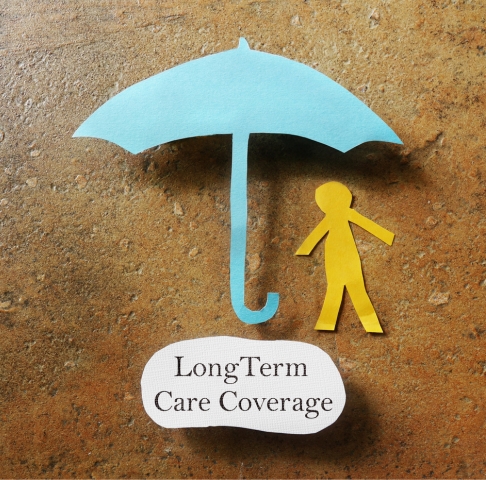These little saviours are always in my handbag, in case my family or I am caught in “oh-no” situations…
Mints
- Ease nausea on bumpy road trips
- Soothe cranky kids
- Mask garlic breath (mine or someone else’s) after eating chicken rice
Bobby pins
- Stop hair from falling into food
- Keep snacks fresh on long flights
- Open a zip tie used to hold things together
Adhesive bandages
- Protect cuts and grazes on skin from infection
- Cushion heels to prevent new-shoe blisters
- Patch leaky water bottle straw
It’s always a big relief when these seemingly unimportant items help to save the day – or that of our loved ones.
If you have dependants, you might strive to always be there to catch them when they fall, give them a lift when they need it… and just make things right. I want to always be there to rescue my family from any crisis, keep them comfortable, and help them realise their dreams. But… if I’m honest with myself, there’ll be times when I can’t.
Life insurance – my family’s saviour when I can’t be there
Life is unpredictable – major illness, disability and death don’t usually tell us their arrival dates and times.
Who will save the day if any of these were to happen to me tomorrow? How will I continue being there for my loved ones i.e. ensuring they have a roof over their heads, the means to pursue their education, and so on?
While my emergency toolkit of mints, bobby pins and adhesive bandages won’t offer much support during these major contingencies, my term life insurance policy would.
What’s life insurance? What’s term life insurance?
Generally speaking, life insurance is a type of financial protection that gives a lump-sum payout to an insured person’s dependants when they die, and depending on the policy coverage, when they become totally and permanently disabled and/or terminally ill. The two common types of life insurance in Singapore are:
- whole life insurance – covers you till you die
- term life insurance – covers you for a specific period
In Singapore, more people probably have term life insurance coverage compared to whole life insurance coverage. All citizens and permanent residents aged 21 to 65 are automatically included in the Dependants’ Protection Scheme (DPS), a type of term life insurance, when they make their first CPF working contribution (my coverage started with my first job at 21 years!). The DPS gives a basic payout in the event of death, terminal illness or total permanent disability.
You can complement this with your own private life insurance coverage to ensure your needs are adequately covered. There are guides on how much coverage young working adults should have, but the amount varies from person to person depending on factors like their age, life stage, number of dependants, liabilities, other savings and so on.
Private term life insurance comes in all shapes and sizes. There are fuss-free plans that give coverage as low as S$150,000 like Singlife Simple Term, and even plans that cover you up till the age of 98 like Singlife Elite Term II.
7 ways term life insurance will continue looking after your family when you can’t
If there are people you love and care about deeply, you’d agree that your life purpose is to look out for your family.
It can be reassuring to know that they’ll continue to be taken care of when you’re no longer able to – thanks to your term life insurance policy.
Here are seven ways a term life insurance payout can save your family when you’re not around:
1. Pay for medical bills and death expenses
Hospitalisation and hospice care are just some of the costs that can add up if we’re terminally ill or permanently disabled. When our time on earth is up, there’ll also be funeral expenses as well as other death expenses like doctor fees for death certification, ambulance fees, administration of estate fees, and in complicated cases, autopsy fees.
This can amount to tens or hundreds of thousands of dollars or more – not something we’d want our loved ones to deal with when they’re already grieving our loss.
2. Clear debts
Not all of us will be fortunate enough to be 100% debt-free when we die. We may have outstanding home loans, car loans, credit card bills and maybe even higher education loans which our families would “inherit” when we die. Definitely not the kind of inheritance they’d expect.
3. Protect financial goals
A breadwinner’s death can put the brakes on their savings and investments plans which were meant to enable their loved ones’ future goals – things like a child’s education. As the investments remain incomplete, they often won’t generate the expected returns, leaving a savings shortfall.
The lump-sum payout from a term life insurance plan can help plug this gap so your family can meet important financial goals.
4. Sustain their lifestyle
A lump-sum payout from a life insurance plan could help to fund our loved ones’ lifestyle – the kind of home they live in, the schools they go to, the kind of medical and health insurance coverage they have and so on.
Aside from paying off lump-sum costs like an outstanding mortgage loan, unpaid school fees for a young child, marriage costs for an older child and even a retirement plan for a spouse, this money could also be put into investment-linked plans that can generate potential upside returns which could help provide financial support for your loved ones.
5. Secure your family’s financial position
A term life insurance payout can help give a family stability when they need it most. With adequate coverage, it could effectively protect their financial standing – something that’s especially important if you have a family member with special needs, severe disabilities or chronic health issues that can involve high and recurring expenses.
The general rule of thumb is to have coverage equivalent to nine or 10 times your annual income but it’s better to look at your individual needs, which a professional financial adviser representative could help with.
Having adequate term life coverage means our loved ones don’t have to prematurely touch investments or rack up debts to do any or all of these things:
- cover liabilities
- finance their future goals
- pay for their regular household and lifestyle expenses
- continue running your business if it’s your main source of income
6. Create an emergency fund (for other emergencies or uncertainties)
Uncertainties like the sudden death of a breadwinner – whether they’re a young working adult, supporting a growing family or have attained affluence – can be a major financial blow for dependants.
We never know when the next uncertainty will present itself, so it’s crucial for surviving family members to be financially prepared with an emergency fund that could support them for at least six months. The lump-sum payout from a term life insurance plan could help with this.
7. Leave a legacy of your love and commitment
We work hard to provide for our families and elevate their standard of living. Aside from helping our loved ones cope with the uncertainties that our passing can bring, term life insurance can also be used to leave a legacy of love and commitment to your next-of-kin.
Should our children be financially successful when we pass on at a ripe old age, the insurance payout could function as a gift of love for our kids, grandkids or great-grandkids to remember us by. It could go towards things like paying for a child’s wedding or first home, or a trust fund for a grandchild.


Unlock your free Pan Pacific DISCOVERY Platinum membership
Purchase any eligible Singlife plan and get fast-tracked to Pan Pac DISCOVERY Platinum, with 20% off dining*, room upgrades, late check-outs, and more.
*Exclusively at participating Pan Pacific Hotels Group operated restaurants only.
Final notes on term life insurance
Nothing can fully compensate for the loss of a loved one. However, the payout from a term life insurance plan could be used in numerous ways to help our family pull through financial uncertainties by supporting them, covering liabilities and sometimes, being a reminder of our love for them. And that’s why term life insurance could be like your family’s saviour when you can’t be there for them.
If you're thinking of getting coverage, remember that term life insurance plans aren't all the same. Do your research to find what’s right for you.
Notes
This advertisement has not been reviewed by the Monetary Authority of Singapore.








